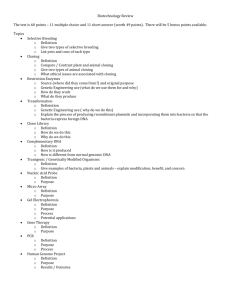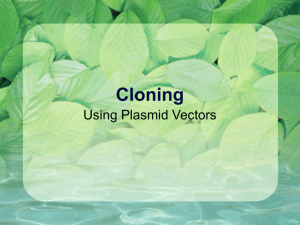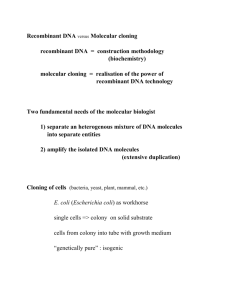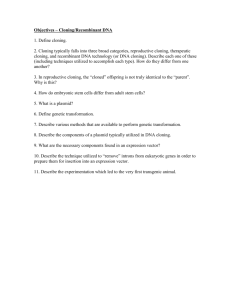Plasmid Guest Blog
advertisement
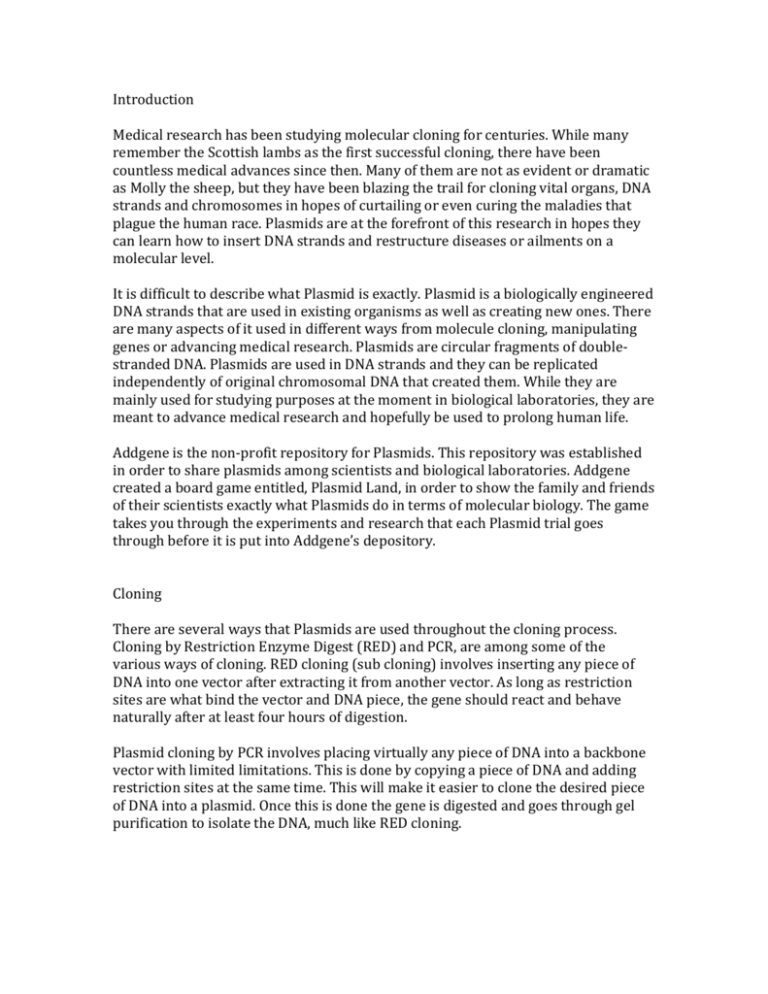
Introduction Medical research has been studying molecular cloning for centuries. While many remember the Scottish lambs as the first successful cloning, there have been countless medical advances since then. Many of them are not as evident or dramatic as Molly the sheep, but they have been blazing the trail for cloning vital organs, DNA strands and chromosomes in hopes of curtailing or even curing the maladies that plague the human race. Plasmids are at the forefront of this research in hopes they can learn how to insert DNA strands and restructure diseases or ailments on a molecular level. It is difficult to describe what Plasmid is exactly. Plasmid is a biologically engineered DNA strands that are used in existing organisms as well as creating new ones. There are many aspects of it used in different ways from molecule cloning, manipulating genes or advancing medical research. Plasmids are circular fragments of doublestranded DNA. Plasmids are used in DNA strands and they can be replicated independently of original chromosomal DNA that created them. While they are mainly used for studying purposes at the moment in biological laboratories, they are meant to advance medical research and hopefully be used to prolong human life. Addgene is the non-profit repository for Plasmids. This repository was established in order to share plasmids among scientists and biological laboratories. Addgene created a board game entitled, Plasmid Land, in order to show the family and friends of their scientists exactly what Plasmids do in terms of molecular biology. The game takes you through the experiments and research that each Plasmid trial goes through before it is put into Addgene’s depository. Cloning There are several ways that Plasmids are used throughout the cloning process. Cloning by Restriction Enzyme Digest (RED) and PCR, are among some of the various ways of cloning. RED cloning (sub cloning) involves inserting any piece of DNA into one vector after extracting it from another vector. As long as restriction sites are what bind the vector and DNA piece, the gene should react and behave naturally after at least four hours of digestion. Plasmid cloning by PCR involves placing virtually any piece of DNA into a backbone vector with limited limitations. This is done by copying a piece of DNA and adding restriction sites at the same time. This will make it easier to clone the desired piece of DNA into a plasmid. Once this is done the gene is digested and goes through gel purification to isolate the DNA, much like RED cloning.
